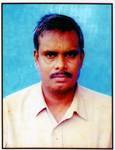The interlinking of rivers is not a new proposal at present. Arthur cotton had proposed the linking of some rivers in 19th century. He proposed for promotion of inland navigation. The Indians are more thankful to him due to his foresight. KL Rao later focused the idea in 1972. He proposed this project for inter linking of rivers in south India for transfer of water for irrigation. In this juncture, the linking of Gang and Cauvery existed. In 1977 captain, Dastur proposed linking of 4200 km long Himalayan canal and 9,300 km long southern garland canal. He also proposed to link Delhi and Patna through two pipelines. Central water commission is a statutory body to look after the proposal of inter linking of rivers. The ministry of water resources is the supreme authority in this aspect. The common minimum programme of the new government will look into this matter to finalise the project proposal with the help of experts in this field. The government of India is sole authority to take a decision with the approval of parliament. The project should cover wide area coverage of large geographical location. Every drop of rain has to be harvested, every lake, glacier and aquifer has to be conserved and every pool or pond has to be preserved. The mega project of 21st century "INTERLINKING OF RIVERS" is the proud of India. It throws a technical challenge to our engineers. The project is required an amount of Rs. 15, 00,000 crores.
It will be taken 12 years of time to complete the project. It requires commitment of Rs.40, 000 crores for every year. The mega project is a gift to Indians and there should not be an imposition of additional tax due to implementation of this project. This project is a gift to upcoming citizens by the policy makers. The construction of this project is a patriotic attempt by political leaders. It is a great opportunity to the politicians to gain the hearts of farmers in India and a challenge will be thrown to our nearest friendly enemy "CHINA". The political leader's mindset should also be changed to fight against poverty. Poverty will be attacked with wealth creation. Wealth will be created with the help of strong asset base. The mega project will become asset base to upcoming citizens. This project will change the entire digital economy of the country. The combination of digital economy and agriculture sector will definitely stimulate the higher level of gross domestic product of India. It is very easy task, if the political decision materialises with the help of new mindset of leaders. The inter linking of rivers involves the construction of 32 dams across 30 rivers. The popular environmentalists SAINATH, MEDHA PATKAR, ARUNDATHI ROY, VANDANA SHIVA, ANIKET ALAM, their valuable direction is needed to make this project more meaningfully. However, the government should not levy any additional tax imposition to execute this project. It is a gift to the upcoming citizens. The implementation of the project is mobilisation of funds through unearthed account of money, and amnesty schemes. The financial resources may be procured through developmental agencies like IDBI, ICICI, NABARD, SBI, IFCI, IDFC,UTI, ONGC,BHEL,HINDUSTHAN PETROLEUM, BHARAT PETROLEUM, MUTUAL FUNDS, FINANCIAL SYNDICATES, STOCK MARKET FUNDS, CONTRIBUTIONS FROM PRIVATE INDUSTRIALISTS,
CONTRIBUTIONS FROM BIG FARMERS, WATER BONDS AND EVEN the government of India can issue ADRs/GDRs for this purpose. The government of India even invite FOREIGN DIRECT INVESTMENT (FDI) for easy flow of funds. The non-governmental organisations can also be invited for financial participation in this mega project. The project will become one of the seven wonders in the world. The construction of project and maintenance of water management should not be in a commercial manner. Privatisation of water resources is not feasible. There is a principle that certain resources like air, water and forest should belong to public without irrespective of their status. There is a general law known as the doctrine of the public trust. This theory indicates that the natural resources should be provided to all. The project will be completed within 15 years by the end of 2022, which is a memorable DIAMOND JUBLIEE YEAR of independent India. If the proposed interlinking project were completed, the right quality and quantity of water would be stored and delivered at the right time in right places. Further, all this is to be achieved in the most cost effective manner, without creating any social deprivations like inadequate rehabilitation of the involuntarily displaced.
About Author / Additional Info:

